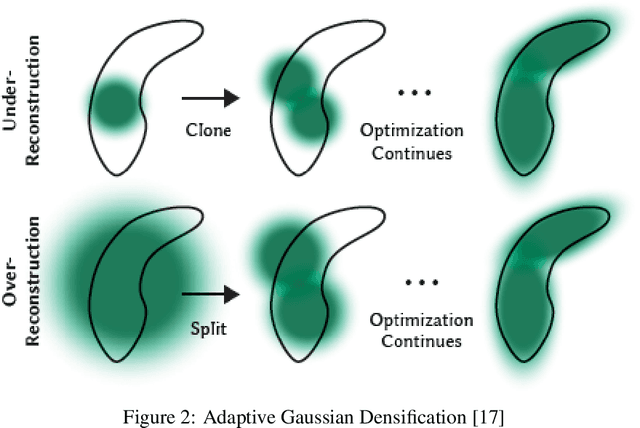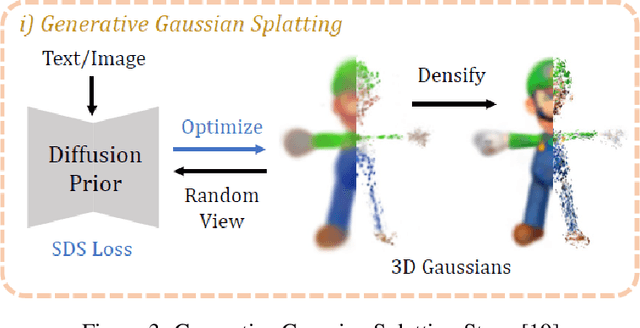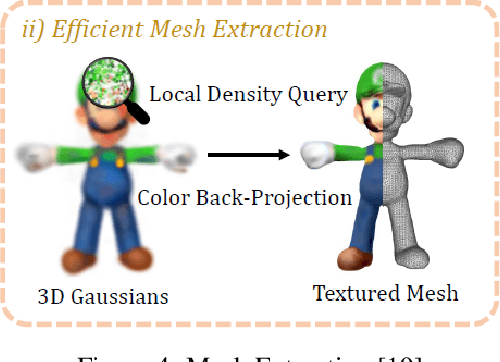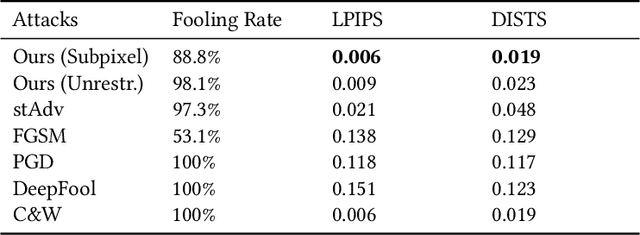Deniz Sen
SyncDreamer for 3D Reconstruction of Endangered Animal Species with NeRF and NeuS
Dec 21, 2023Abstract:The main aim of this study is to demonstrate how innovative view synthesis and 3D reconstruction techniques can be used to create models of endangered species using monocular RGB images. To achieve this, we employed SyncDreamer to produce unique perspectives and NeuS and NeRF to reconstruct 3D representations. We chose four different animals, including the oriental stork, frog, dragonfly, and tiger, as our subjects for this study. Our results show that the combination of SyncDreamer, NeRF, and NeuS techniques can successfully create 3D models of endangered animals. However, we also observed that NeuS produced blurry images, while NeRF generated sharper but noisier images. This study highlights the potential of modeling endangered animals and offers a new direction for future research in this field. By showcasing the effectiveness of these advanced techniques, we hope to encourage further exploration and development of techniques for preserving and studying endangered species.
Exploring the Feasibility of Generating Realistic 3D Models of Endangered Species Using DreamGaussian: An Analysis of Elevation Angle's Impact on Model Generation
Dec 15, 2023



Abstract:Many species face the threat of extinction. It's important to study these species and gather information about them as much as possible to preserve biodiversity. Due to the rarity of endangered species, there is a limited amount of data available, making it difficult to apply data requiring generative AI methods to this domain. We aim to study the feasibility of generating consistent and real-like 3D models of endangered animals using limited data. Such a phenomenon leads us to utilize zero-shot stable diffusion models that can generate a 3D model out of a single image of the target species. This paper investigates the intricate relationship between elevation angle and the output quality of 3D model generation, focusing on the innovative approach presented in DreamGaussian. DreamGaussian, a novel framework utilizing Generative Gaussian Splatting along with novel mesh extraction and refinement algorithms, serves as the focal point of our study. We conduct a comprehensive analysis, analyzing the effect of varying elevation angles on DreamGaussian's ability to reconstruct 3D scenes accurately. Through an empirical evaluation, we demonstrate how changes in elevation angle impact the generated images' spatial coherence, structural integrity, and perceptual realism. We observed that giving a correct elevation angle with the input image significantly affects the result of the generated 3D model. We hope this study to be influential for the usability of AI to preserve endangered animals; while the penultimate aim is to obtain a model that can output biologically consistent 3D models via small samples, the qualitative interpretation of an existing state-of-the-art model such as DreamGaussian will be a step forward in our goal.
Lesion Detection on Leaves using Class Activation Maps
Jun 23, 2023

Abstract:Lesion detection on plant leaves is a critical task in plant pathology and agricultural research. Identifying lesions enables assessing the severity of plant diseases and making informed decisions regarding disease control measures and treatment strategies. To detect lesions, there are studies that propose well-known object detectors. However, training object detectors to detect small objects such as lesions can be problematic. In this study, we propose a method for lesion detection on plant leaves utilizing class activation maps generated by a ResNet-18 classifier. In the test set, we achieved a 0.45 success rate in predicting the locations of lesions in leaves. Our study presents a novel approach for lesion detection on plant leaves by utilizing CAMs generated by a ResNet classifier while eliminating the need for a lesion annotation process.
Imperceptible Adversarial Examples by Spatial Chroma-Shift
Sep 02, 2021



Abstract:Deep Neural Networks have been shown to be vulnerable to various kinds of adversarial perturbations. In addition to widely studied additive noise based perturbations, adversarial examples can also be created by applying a per pixel spatial drift on input images. While spatial transformation based adversarial examples look more natural to human observers due to absence of additive noise, they still possess visible distortions caused by spatial transformations. Since the human vision is more sensitive to the distortions in the luminance compared to those in chrominance channels, which is one of the main ideas behind the lossy visual multimedia compression standards, we propose a spatial transformation based perturbation method to create adversarial examples by only modifying the color components of an input image. While having competitive fooling rates on CIFAR-10 and NIPS2017 Adversarial Learning Challenge datasets, examples created with the proposed method have better scores with regards to various perceptual quality metrics. Human visual perception studies validate that the examples are more natural looking and often indistinguishable from their original counterparts.
 Add to Chrome
Add to Chrome Add to Firefox
Add to Firefox Add to Edge
Add to Edge